QuestionHi, I am in the process of adopting a male GS pup. When I adopt him, he will be 8 weeks of a age.
I currently live with two neutered male 4 yo dachshunds and adult cats.
My dachshunds get along VERY VERY well. The cats get along VERY well. And together, my cats and dogs get along well and live peacefully.
I am adopting the GS male pup from a breeder that breeds GS based on temperment. She say's that her dogs are well socialized. She has a 7 yo daughter and papillions (tiny dogs).
My CONCERN is ensuring that the dachshunds & cats are not in any threat from a GS when it grows.
I plan on neutering ASAP.
Is it possible that everyone can live peacefully?
Any advice is greatly appreciated.
AnswerOne of the great advantages of starting with an 8 week old is that they are highly receptive to new experiences and will adapt themselves to their environment. Add the right breeding, and this may work well. You will need to be a strong leader. Start obedience at once with the pup. keep the sessions short, only a couple of repetitions of each command at a time. The key to most behavior problems is approaching things using the dog's natural instincts. Dogs see all the people and dogs in the household as a pack with each having their own rank in the pack and a top dog. Life is much easier if the 2 legged pack members outrank the 4 legged ones. You can learn to play the role of top dog by reading some books or going to a good obedience class. A good obedience class or book is about you being top dog, not about rewarding standard commands with a treat. Start at http://www.dogsbestfriend.com/ For more on being top dog, see http://www.dogbreedinfo.com./topdogrules.htm
The puppy will see the cats and Dachshunds as litter mates eager for rough play. I am sure the cats won't be interested and maybe not the Dachshunds. You will have to teach him not to chew them, just like the sofa cushions. When you are around you need to keep a close eye on the dog. Use closed doors or gates to keep it in the same room as you are, and perhaps as I do, a short chain fastened to the computer desk. As soon as it focuses on something it shouldn't chew, give it a sharp ''Ah, ah, ah!'' and offer it a chew toy. When you can't watch it, crate it.
It is only natural that a puppy resists its crate at first. What the puppy wants more than anything else is to be others, you, anyone else in the household, and any other pets. In our modern society, even if we are home, other things distract us from the attention an uncrated puppy must have. The only real solution is to crate the dog when you aren't around. The dog may be happier in its den than loose in the house. It relaxes, it feels safe in its den. It rests, the body slows down reducing the need for water and relieving its self. Dogs that have been crated all along do very well. Many of them will rest in their crates even when the door is open. I think the plastic ones give the dog more of a safe, enclosed den feeling. Metal ones can be put in a corner or covered with something the dog can't pull in and chew. Select a crate just big enough for the full grown dog to stretch out in.
Leave it some toys. Perhaps a Kong filled with peanut butter. Don't leave anything in the crate the dog might chew up. It will do fine without even any bedding. You will come home to a safe dog and a house you can enjoy.
A dog that has not been crated since it was little, may take some work. Start out just putting its toys and treats in the crate. Praise it for going in. Feed it in the crate. This is also an easy way to maintain order at feeding time for more than one dog.
The "shut the puppy in a safe room" is a fallacy. Very few houses even have a safe room. How many of us have a room with a hard surfaced floor and nothing else? Most rooms have electrical cords to chew if nothing else. In addition to destroying anything a bored puppy finds to chew, it may choke or have intestinal blockage from the pieces. I had a friend that left her dog in a "safe" room. It ate a hole in the floor covering. The safe rooms fail to give the dog the comfort of the enclosed space their instinct requires. Nor do they restrict activity extending the time the dog can go without relieving itself.

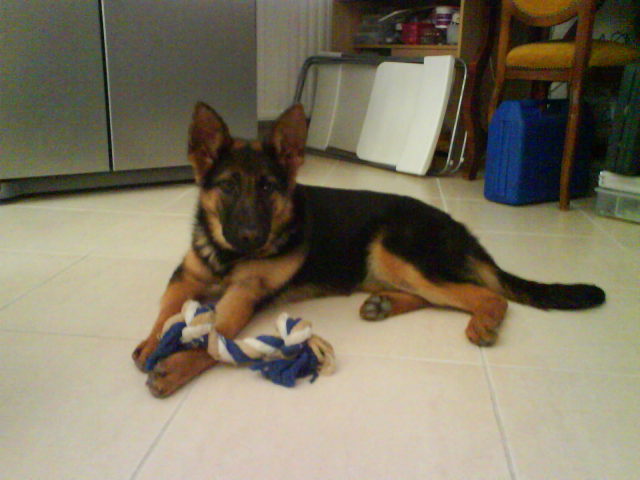 poor growth because bad nutrition
Question
7 month
I bought a female gsd when she was 7 m
poor growth because bad nutrition
Question
7 month
I bought a female gsd when she was 7 m
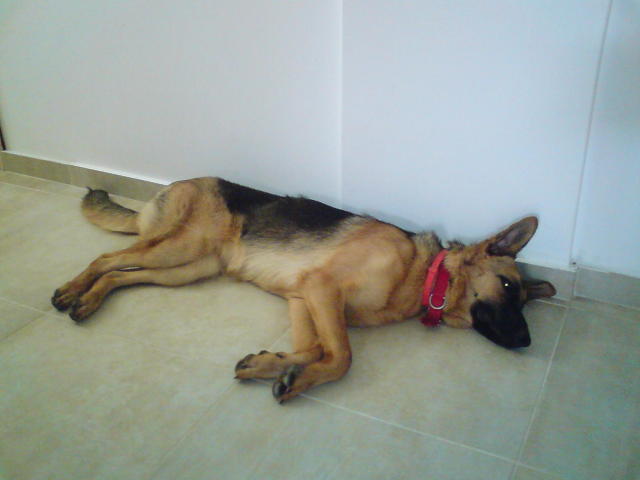 puppy growing thin and tall
Question
Lying down
Hi, I have a 9 month old German She
puppy growing thin and tall
Question
Lying down
Hi, I have a 9 month old German She
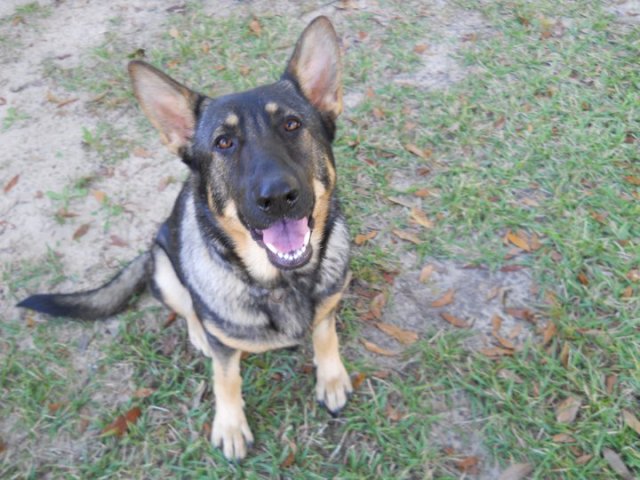 Training rescued German Shepherd
Question
Libby
My boyfriend and I have recently took in
Training rescued German Shepherd
Question
Libby
My boyfriend and I have recently took in
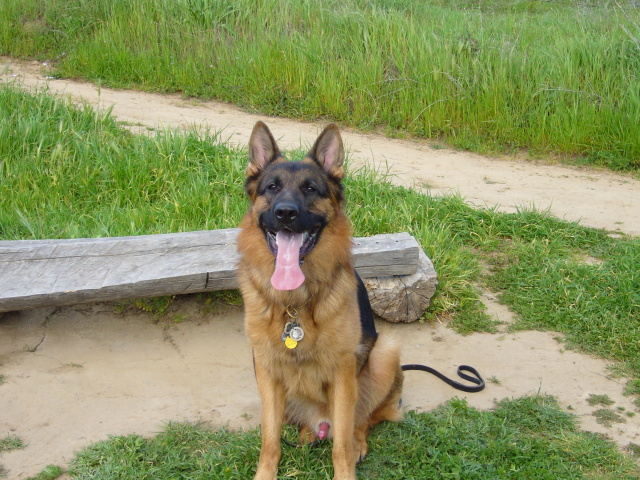 Aggression
Question
Ray
Hello, I need help...I lost my female GSD
Aggression
Question
Ray
Hello, I need help...I lost my female GSD
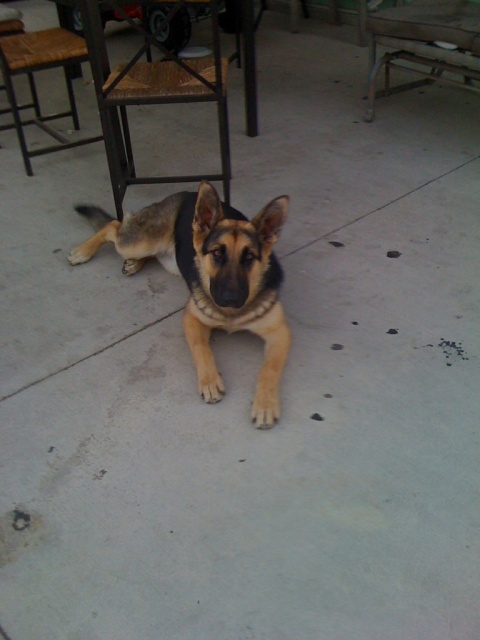 6 month pup
Question6 month old female
QUESTION: I was offer
6 month pup
Question6 month old female
QUESTION: I was offer